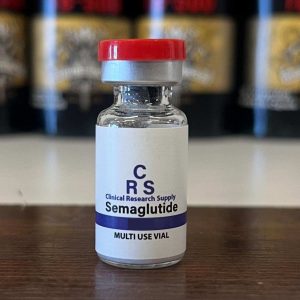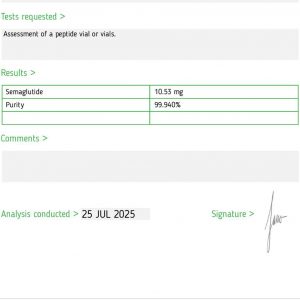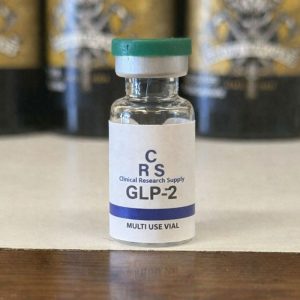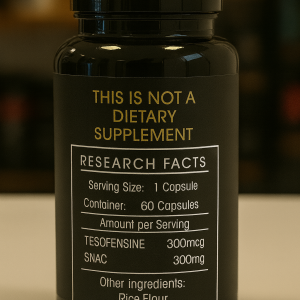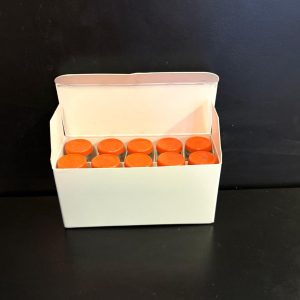Cobalt Research Liothyronine (T3) – 50mcg/ml x 30ml
$69.99
Liothyronine (T3) is a synthetic thyroid hormone used in research to investigate metabolism, fat loss, and thyroid regulation. This vial contains 30ml of liquid solution at 50mcg per milliliter, supplied for laboratory research only.
Product Profile
-
Compound: Liothyronine (T3)
-
Concentration: 50mcg/ml
-
Volume: 30ml per vial
-
Form: Liquid solution
-
Classification: Synthetic triiodothyronine (T3) thyroid hormone
-
Application: Laboratory and research use only
Mechanism of Action
Liothyronine represents the active form of thyroid hormone. It binds to nuclear thyroid hormone receptors, directly altering gene transcription and protein synthesis.
-
Metabolic regulation: Increases basal metabolic rate (BMR) by stimulating mitochondrial activity.
-
Fat metabolism: Promotes lipolysis and oxidation of fatty acids.
-
Protein synthesis: Regulates turnover in skeletal muscle.
-
Carbohydrate metabolism: Enhances glucose absorption and utilization.
Research Applications
1. Thyroid Function Studies
-
Evaluation of hypothyroidism models
-
Investigation of feedback loops with TSH and T4
2. Fat Loss & Metabolic Research
-
Observation of increased calorie expenditure
-
Enhanced lipid breakdown in adipose tissue
3. Athletic & Performance Studies
-
Use in research on body composition changes during caloric restriction
-
Comparison of T3 to T4 in metabolic rate acceleration
4. Neurological and Cognitive Studies
-
Investigation of thyroid hormone’s role in mood and cognition
-
Links to central nervous system metabolism
Handling & Storage
-
Store vials in a cool, dry place, protected from light.
-
Seal tightly after each use.
-
Maintain sterile conditions when withdrawing liquid.
-
Use contents within research stability guidelines.
Liothyronine (T3) – Research FAQs
1. What is the concentration of Liothyronine in this vial?
The concentration is 50 micrograms per milliliter, with a total of 30 milliliters per vial.
2. How does Liothyronine differ from Levothyroxine (T4)?
Liothyronine is the active T3 form that directly binds receptors, while Levothyroxine (T4) requires conversion to T3 before exerting its effects.
3. What metabolic changes are observed in T3 research?
Research demonstrates higher oxygen consumption, increased ATP turnover, and accelerated fat oxidation.
4. How does T3 affect fat loss protocols?
By increasing basal metabolic rate, T3 leads to greater daily calorie expenditure and faster lipid mobilization.
5. Why is T3 studied in bodybuilding and athletic models?
It is examined for its role in maintaining lean muscle while enhancing fat loss during restricted calorie intake.
6. What feedback mechanisms regulate T3?
T3 interacts with the hypothalamic-pituitary-thyroid (HPT) axis, reducing TSH secretion and altering T4 conversion rates.
7. How does T3 influence glucose metabolism?
T3 increases intestinal glucose absorption, hepatic gluconeogenesis, and peripheral glucose utilization.
8. What are the risks of elevated T3 in research models?
Excessive T3 may cause catabolism, elevated heart rate, and thermogenic stress in studied organisms.
9. How long is Liothyronine active in circulation?
T3 has a shorter half-life (≈24 hours) compared to T4 (≈7 days), which explains faster onset and shorter duration of action.
10. Is this Liothyronine intended for therapeutic use?
No. Liothyronine (T3) – 50mcg/ml x 30ml is provided only for laboratory and research investigations. It is not intended for human or veterinary use.
Related products
Semaglutide GLP-1 Injection Vial (5mg, 10mg)
In stock
GLP-2 Injection Vial (5mg, 10mg, 30mg)
In stock











